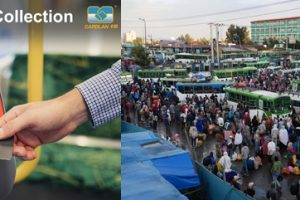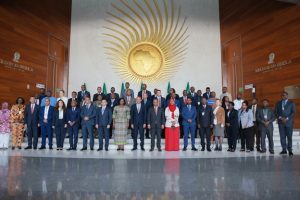
High-tech industries are key for countries’ economic development. It employs millions of workers globally. Significantly, the high-tech sector can highly engage in large number of workforces. Hence, apart from private sectors, the government has the responsibility to facilitate conducive conditions for high-tech investment expansions, including automobiles, steel, aluminum-machined products among others, so disclosed Ethiopia 2050 think tank group.
Ethiopia 2050 think tank group statement stated that new technologies in the broader areas of advanced manufacturing offer an opportunity for leapfrogging to emerging economies like Ethiopia. For instance, digital manufacturing requires significantly less capital expenditure as compared to traditional manufacturing, particularly when coupled with government supports like tax credits or public and private partnerships.
According to the statement, the preferred-model around the world in advanced manufacturing involves collaborations with universities, as they are more driven by cutting-edge technology than massive capital. This emerging age of manufacturing that is gaining traction around the globe is a key component of fourth generation Industry. For countries like Ethiopia, advanced manufacturing opens up further possibilities in fintech, big data analytics, advanced robotics, cyber-security, artificial intelligence, precision medicine, and agri-tech, it said.
It further stressed that Ethiopia should take measures to be a beneficiary of the fourth industrial revolution, particularly in advanced manufacturing. Regarding launching advanced manufacturing center for metals, a pervasive problem that had contributed to inefficiencies and delays in completion of important infrastructure projects in Ethiopia has been the lack of spare parts. Prohibitive expenses, as well as delays in importing materials, have had significant negative impacts in several sectors such as the manufacturing industry, freight and passenger transportation infrastructure, and agricultural equipment. We propose that with additive manufacturing, particularly 3D printing technology, the time has come for Ethiopia to address the spare parts problem by building an infrastructure for 3D printing.
As to the report, this will save foreign currency, time, and also encourage innovation in metal manufacturing within Ethiopia. A consortium of government particularly the military and industries could take the lead. This will be a for-profit entity charging for services rendered. Recycled metal can be used, significantly reducing the costs. There are several examples in Africa where such technology is being effectively leveraged. While its current status is unknown, Ethiopian Airline’s plan, announced in 2016, to collaborate with a South African company in aerospace for establishing a digital manufacturing center in Addis is a possibility worth mentioning. Ethiopia, which is currently aggressively investing on textile manufacturing infrastructure, also faces a risk of automation that could significantly compromise opportunities as this industry could move back to Europe or the US.
The statement indicated that this eco-system will train undergraduate and graduate students in additive manufacturing and also create a conducive environment for entrepreneurial ventures. Twining with international collaborators as well as local industry will enrich the opportunities available to students, faculty, the private sector, and government. In Promoting Pharmaceutical Industry for leadership in the African Market, Ethiopia has positioned itself as a destination for the pharmaceutical industry for some time.
The demographic dividend has been cited as one of the compelling reasons together with access to the sizable African market. The government had also identified pharmaceutical manufacturing as a priority sector and the Kilinto Industry Park has been identified as a hub. Therefore, together with the proposed initiatives for center-level university, industry and government ecosystems to train a globally competitive workforce, there is ample opportunity in this area.
Concerning expansion of eco-industrial parks, the statement noted that the concept of eco-industrial parks where there is a well-planned cooperation among businesses and the local community with the goal of achieving sustainable growth and efficiently sharing resources is emerging as a popular model. Such model will have a natural fit for Ethiopia where there is strong need for developing growth models. This integration with the local community should also be reflected at the national level in both vertical and horizontal integration.
According to the World Economic Forum, priority areas for creating an enabling environment for advanced manufacturing include:
Energy: Manufacturing requires access to reliable, efficient and cost-effective energy supplies. Many African countries have significantly expanded their energy generation, transmission and distribution infrastructure with a focus on renewable energy sources like geothermal and wind. Continued capacity improvements, enabled by a more aggressive and prioritized infrastructure development strategy, will be critical in meeting the energy needs of an expanded economy.
Trade: Manufacturing relies on global markets, and so access to those markets is key. Trade facilitation is also decisive; this will involve–working with companies to leverage new technology solutions to meet policy goals, arrest anti-corruption efforts and promote efficient customs processing while promoting access to input materials for further manufacturing, job creation and product development in Africa for Africa. Enabling market access by reducing tariff and non-tariff barriers enables countries to benefit from both innovative new products, such as environmental technologies, that can solve local challenges, as well as access to key inputs that can grow necessary markets.
Enhance education and skills development. Advanced manufacturing jobs are high-skilled jobs. Global businesses go where the talent is, and we need to make sure that the place is Africa. That is going to require enhanced curricula built around STEM subjects, new recruits to the ranks of qualified educators, and new teaching techniques and innovations in the classroom, especially in science. In addition to fast-tracking local talent, we also have to reconsider our student visa and immigration policies in order to bring in the world’s smartest students and encourage them to stay. This is only possible if education institutions are competitive and world-class.
Public-private partnerships (PPPs): Improving the business environment requires us to build genuine partnerships between the public sector and the private. This idea of public-private partnerships is critical to every other priority mentioned. We should be working with, not against, each other to create a strong, sustainable framework for growth. This is a common thread running through countries that are proving successful in the global economy.
Inclusion and diversity: Diversity is being asked to the party, inclusion is being asked to dance! Whether economic, societal, cultural or gender, inclusion and diversity are areas where clear-sighted policies can lead to sustainable economic growth, helping Africa to deliver a balanced and sustainable development. This can also be a source of innovation.
Sustainability: The world needs solutions for big challenges like energy, climate change, water, food, nature and social issues. Africa’s population is projected to hit 2.4 billion by 2050, putting pressure on resources. Circular business models will ensure optimal utilization of available resources and enhanced productivity across the value chain.
The advanced manufacturing plan described here is ambitious. But we have advantages that will help us succeed in this effort – advantages many other nations do not have, and never will. The continent is sitting on more than 82 trillion Dollar in discovered natural resources, with the potential to contribute 30 billion Dollar a year to government revenues over the next 20 years. Africa also possesses other natural resources – such as minerals, rivers, forests and fisheries – in vast quantities.
However, most regions do not possess our wealth of natural resources. Most do not possess our intellectual resources, a community of thought-leaders and a truly open exchange of ideas, it said.
BY MEHARI BEYENE
THE ETHIOPIAN HERALD SEPTEMBER 3/ 2021





